Baklava is a phyllo dessert with multiple layers, filled with walnuts, drizzled with butter and soaked in syrup! In my native Albania, we call it Bakllava! Homemade Baklava is a traditional dessert not only in Mediterranean but most Balkan countries and several Middle Eastern countries.
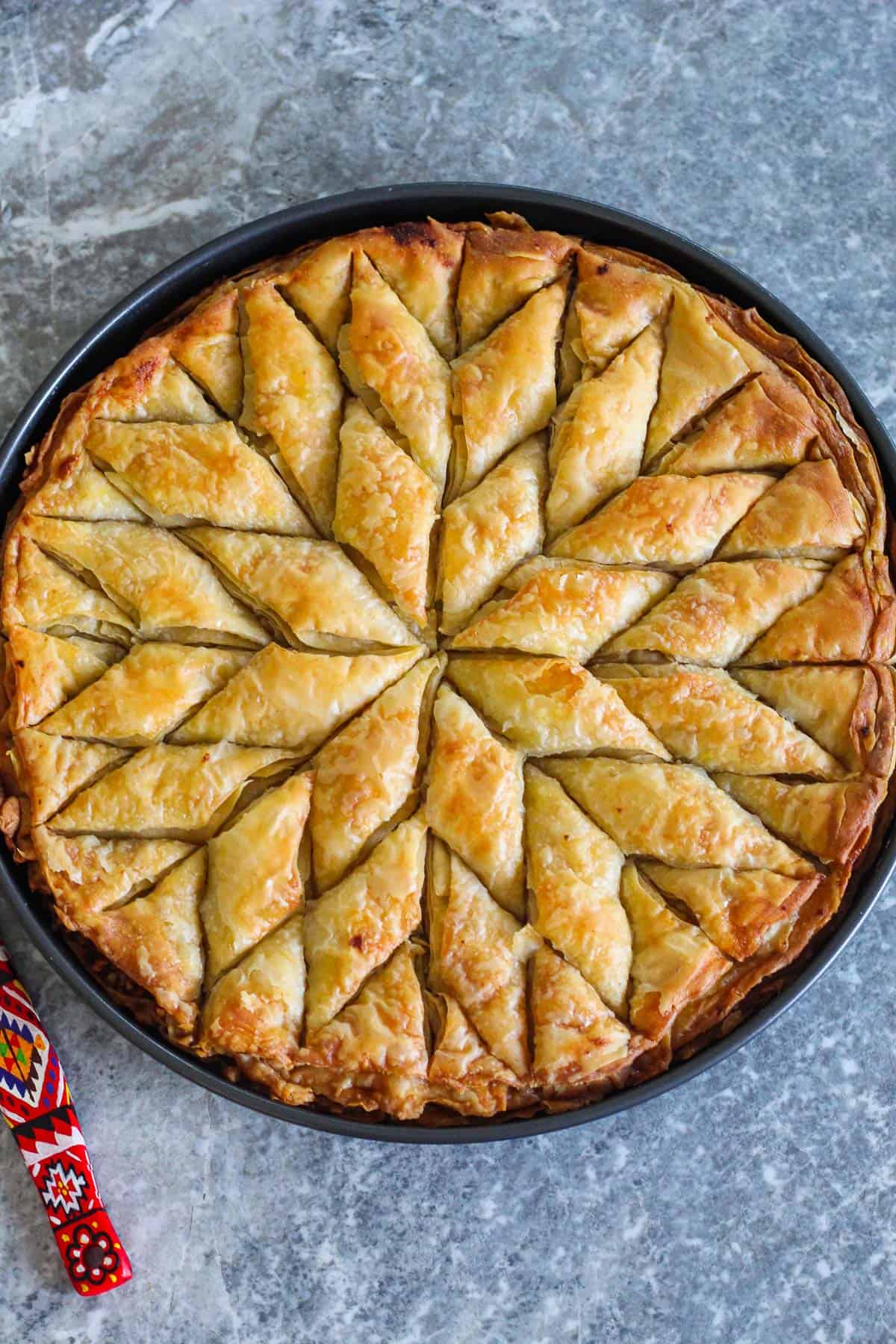
What is Baklava?
Baklava is a delicious phyllo (fillo) dessert with many layers of flaky and buttery dough. It is filled with nuts and soaked in syrup.
While there are many contested articles on origins of Baklava, I can say that in my native country of Albania, baklava was introduced by the Ottoman empire. We do call it Bakllava now and since we have been making this dessert for hundreds of years we definitely have our own spin on it.
In Albanian cuisine, baklava is usually cut in rhombus shape (diamond shape) while in other cuisines it can be not only in rhombus shape but also square or rectangular shape. More modern creations have baklava rolls or shell shapes created by pastry chefs.
While for me personally, baklava is related to New Year’s celebrations for many families baklava is made during the month of Ramadan (Eid). There are other religious celebrations as well where homecooks will make baklava a day or two before.
No matter the occasion, baklava is made in a big tray and is meant to be enjoyed with family, friends and neighbors.
Homemade Phyllo or Frozen?
While I was growing up, this was not even a question. Frozen phyllo sheets didn’t exist!! I think they first started appearing in stores when I was in high school.
I grew up watching my mom make baklava every year, few days before New Year’s. She always made the phyllo layers from scratch and her homemade baklava is the best I have ever tried!
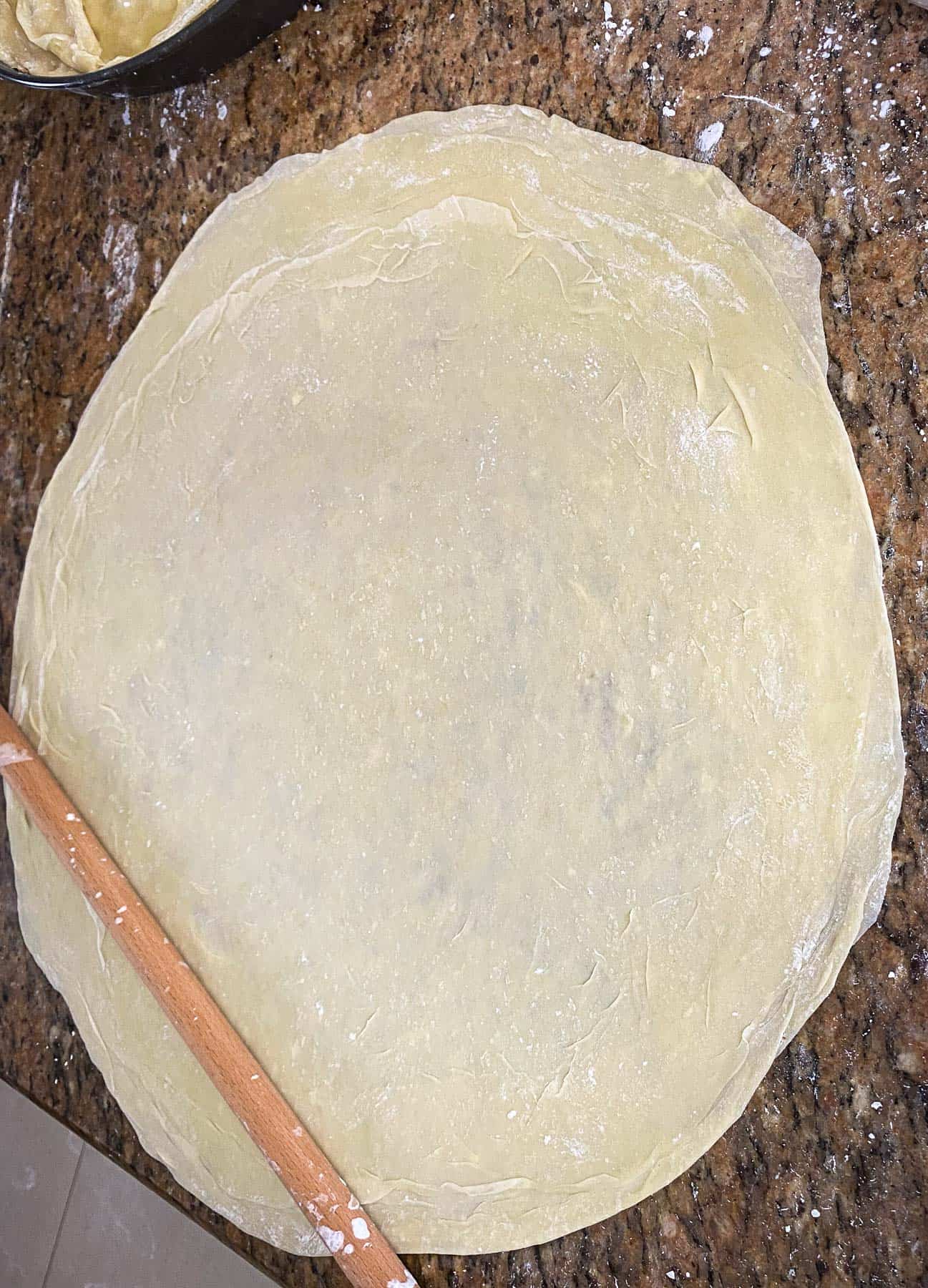
I wrote this recipe with memories in mind of how we used to make baklava (bakllava) and I know it’s not the fastest, more convenient method. But if you were looking for the old fashioned way of making Baklava, you found the right recipe. I’ll share tips throughout the post about making this dessert with frozen sheets of phyllo as well and hopefully soon I can publish a recipe for the version with frozen phyllo sheets too.
The rolling pin I use for the layers is called ‘Okllai” in Albanian and it’s more like a stick than a rolling pin. It helps flatten the dough rolls into circular layers that get thinner each time you roll and spread the phyllo. You have to keep going until the layer can’t get any thinner.
Rolling homemade phyllo layers it is time consuming, your shoulders will hurt the next day, believe me!! But there’s a certain pride and satisfaction that comes from making a dough turn into so many of these flaky layers. It’s definitely a skill that is getting lost in time though!
There are some methods where you can save time by combining 3-4 layers of phyllo at a time, add butter in between and roll them open together. While this might look like the layers are sticking together when rolling, the layers will separate during baking because of the butter.
Filling for Baklava
Most Albanian households use walnuts for the filling of Baklava. Our neighbors in Greece use either walnuts, pistachios or almonds. Turkish baklava around the world is well known for its pistachio filling. However, my Turkish friends tell me that their families use walnuts, hazelnuts or pistachios for the filling.
Filling can be just the nuts of choice, chopped in smaller pieces. I tend to mix a little sugar with walnuts for the filling. Variations of fillings besides the type of nuts include added cinnamon with the nuts.
How to Make Syrup for Baklava?
Typical syrup for baklava is very simple, water, sugar and lemon. Sometimes I add few cloves as well to syrup for additional aroma. Also vanilla extract is very commonly used in some households.
When lemon was not available, we added a powder substance called Limontoz to syrup to cut the sweetness of sugar and balance it with acid. After a lot of Google search I found out that Limontoz is tartaric acid. I have personally never seen it in stores here in Florida where I live, but maybe it’s in the canning section. Either way, I personally use lemon now to make the syrup.
Most Greek recipes include honey in the their syrup.
Other variations of syrup include rose water or orange flavoring. Some others use certain herbs in the syrup besides water and sugar for added depth of flavoring.
I mix 3 cups of sugar with 4 cups of water for my syrup as I don’t like overly sweet baklava. However, once you have made baklava several times you’ll settle on your own recipe for the syrup as you adjust for more or less sugar. Most recipes in my family actually have a lot more sugar than mine.
Also, I’ve noticed that several families I know make their baklava with a lot more syrup than I do. Their baklava is not only soaked in syrup but also lays in a thick layer of syrup. Mine soaks the syrup I pour over and only a thin layer of syrup is left in the tray afterwards just to spoon some over when serving. So please keep these differences in mind when you prepare yours:).
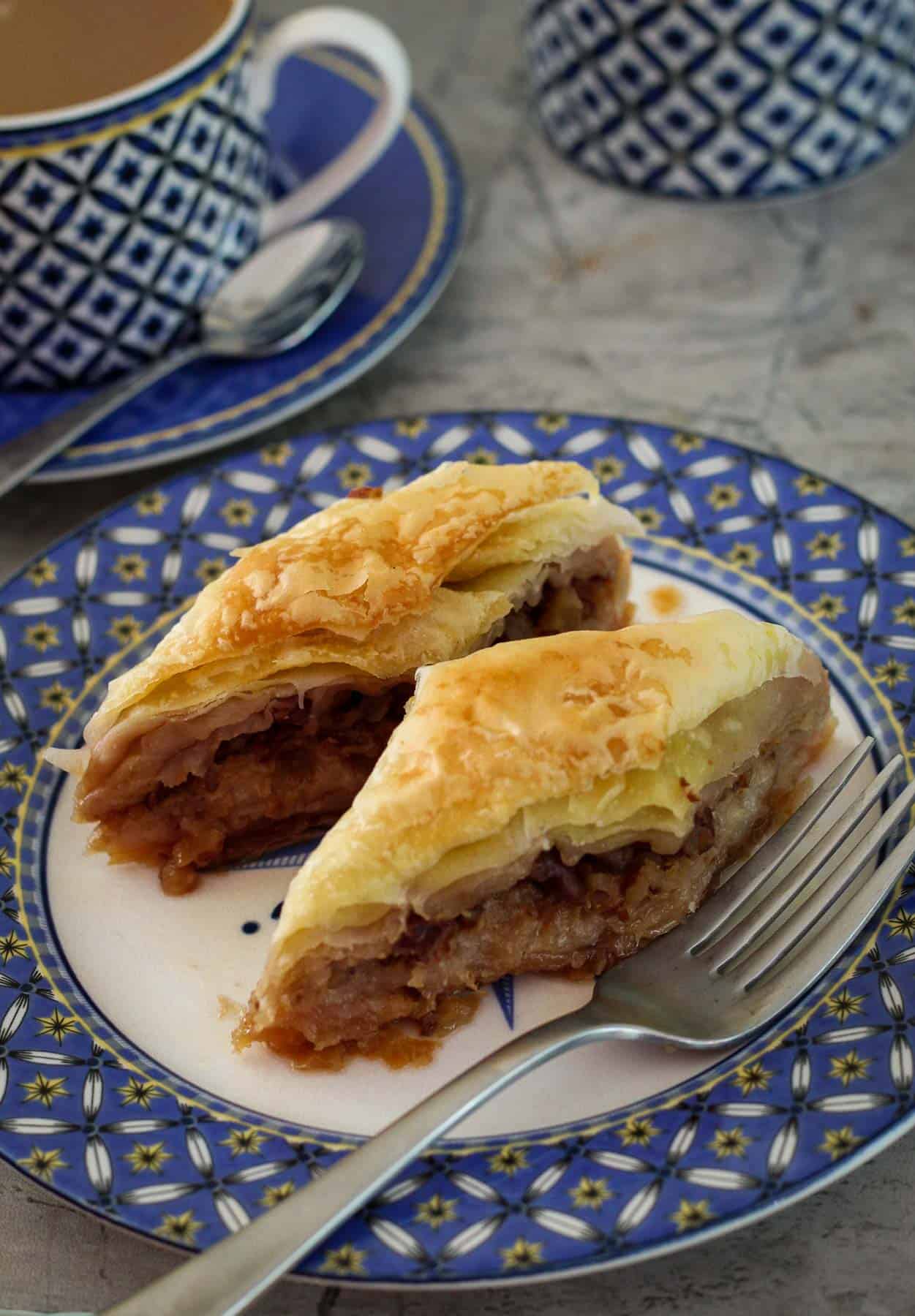
Baking Baklava
Homemade baklava has so many layers of phyllo, anywhere from 40 to 60 but in special cases even more. If you bake it in high temperatures, you risk burning the upper layers and not baking the middle ones.
If you bake it in very low temperatures, then the heat might not reach the middle layers and they’ll get soggy once you pour syrup on the baking dish.
I typically start at 350 degrees F (about 180 degrees C) until the upper layer gets a golden color, then I lower temperature to 300 degrees F (150 degrees C) and bake for a minimum of 2.5 hrs. If upper layer starts getting more color, then I cover the baking tray with aluminum foil to prevent it from burning. Check often every 20 minutes or so until you achieve the final result.
You need to cut the Baklava before baking it as to not crumble the layers after baking. I show in my video how to cut baklava in a pretty pattern.
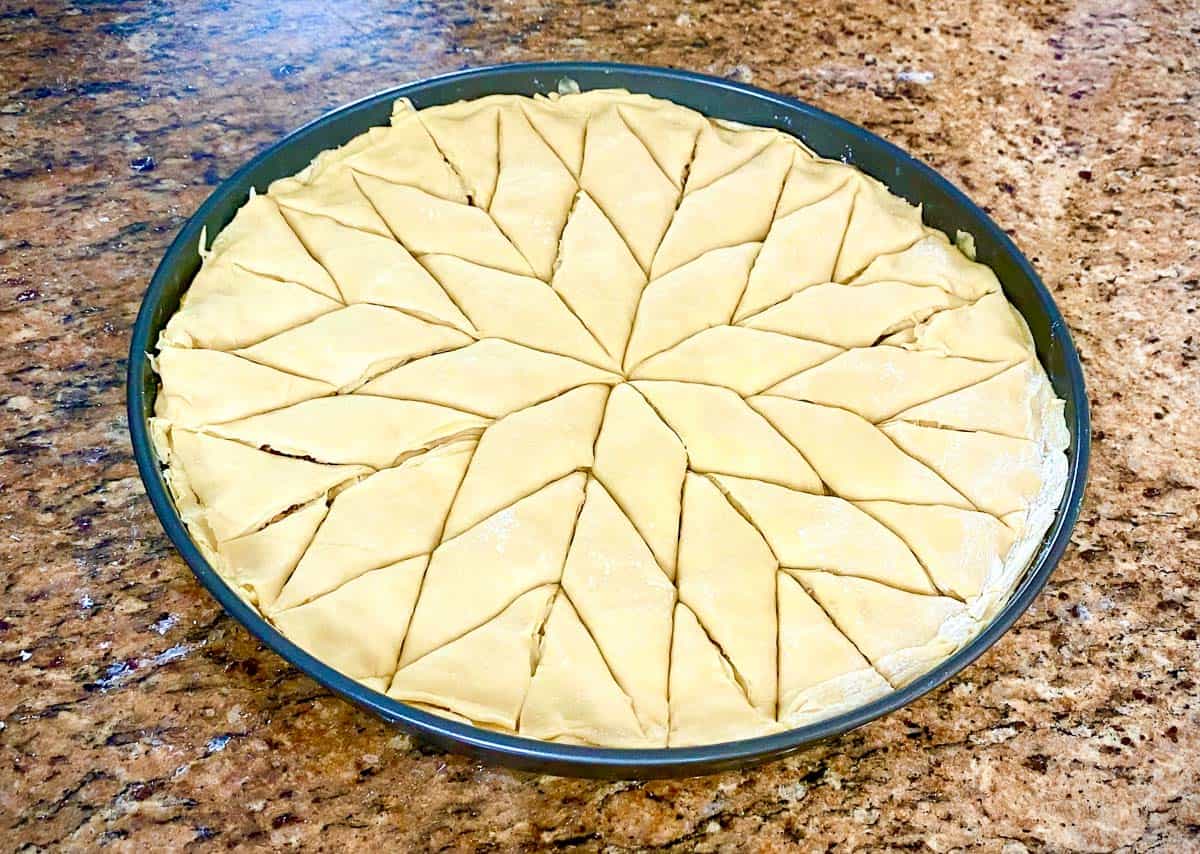
More Tips & Notes
I’m not going to lie, it takes practice to get Baklava right. But if you grew up eating baklava on special occasions like I did, I’m pretty sure you already know most of these tips as they’re common knowledge in Mediterranean cuisine.
- Baking dish – pick a round, deep baking tray for homemade phyllo and a rectangular one for frozen layers.
- Syrup – Pour cold syrup over hot baklava or hot syrup over cool baklava. This way the phyllo will absorb the syrup and not get soggy.
- Storage – traditionally we stored baklava in room temperature, covered for few days then in the refrigerator for another week.
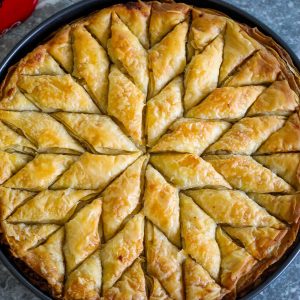
Homemade Baklava From Scratch (Bakllava)
Equipment
- 15 inch deep baking dish
Ingredients
Phyllo Dough
- 8 cups all purpose flour, unbleached (about 1 kg)
- 5 egg yolks
- 0.5 tbsp salt
- 1 cup olive oil extra virgin
- 1.5 cups warm water
Filling
- 1 lb chopped walnuts
- 0.25 cup sugar
Syrup
- 3 cups sugar
- 4 cups water
- 1 slice lemon
- 4 cloves
Additional Ingredients
- 4 sticks butter (about 450 grams)
- 2 cups corn starch
Instructions
Phyllo Dough
- Sift flour (if it doesn't come sifted). Add salt to flour, mix then create a well in the flour. Add 5 egg yolks in it. Start mixing with your hands slowly from center to outer layers.
- Slowly add olive oil and warm water as you mix. It can take few minutes to create the dough. Initially the dough will be sticky but as you work it, it will become elastic. Adjust with an extra tablespoon of flour or water if needed.
- Transfer dough to a floured surface, knead it for about 5 minutes or so. Place dough on a plate, cover it and let it rest for about 30 minutes or so.
Syrup
- Add sugar, cloves and lemon slice on a pot. Pour water and set to medium heat. Don't mix it as it will become grainy. Once it boils, lower heat and let the syrup cook for 15-20 minutes. Turn the heat off and let it cool while you work the phyllo.
Melt Butter
- Melt 4 sticks of butter in a sauce pot, make sure to keep heat medium or medium low. Once butter is all melted, you'll notice there's a white layer in the bottom of the pot. Skim that layer as that will stain the phyllo sheets.
Filling
- Pulse on a blender walnut halves with sugar, mix it well and place on the side.
Make Baklava
- Dough should be ready to work with after half an hour. Separate in small pieces and roll each of them. Place the rolls of dough over parchment paper.
- Butter the bottom of a round baking dish.
- Start rolling each dough roll with a rolling pin. Use cornstarch to avoid the dough sticking. Open and stretch each dough roll in a circular shape as much as you can. It has to be very thin. Place it carefully over baking tray. Cut on the sides so it stays flat on the tray. Leftovers can be used as middle layers or completely different dish on the side.
- Continue rolling the phyllo dough rolls one by one. Sprinkle with butter as you add to the baking tray in between layers. I personally brush with butter with frozen phyllo layers, but just sprinkle with butter with homemade phyllo.
- Once you are done with half the layers, add filling in one layer. Keep it even and cover the whole surface.
- Roll the rest of the layers, one by one and layer them on top. Once done, cut the baklava in desired shape. Then pour the remaining butter over evenly.
- Bake baklava initially at 350 degrees F, for 15 minutes or so. Then lower the temperature to about 310 degrees F. Keep baking at this temperature for at least 2 hrs. Check occasionally and even add an aluminum foil to prevent the top layers from getting burnt. Mine took 2 hrs and 20 minutes to bake.
- Add cold syrup on hot baklava (or the other way around, let baklava cool overnight and pour hot syrup on it). Let the baklava rest and absorb the syrup.
- Cover and let it rest in room temperature. It can be kept in room temperature for few days (covered) then refrigerate for about a week. Enjoy it:)
Video
Notes
- Video – I made a video for this recipe as I realized that for those reading this for the first time, it is hard to even image how to roll the layers of phyllo. Please keep in the mind with the video that it took me at least 6 hours from beginning to end to make the baklava and the video is condensed to about 30 minutes so it can show the most important key points of this recipe. Please don’t hesitate to contact me with any questions!!
- Nutrition Label – please note that nutrition label provided is an estimate and it takes into account all the ingredients used. For example, I use 2 cups cornstarch in the process of rolling the phyllo layers but not all of it is used. Also, I add syrup to baklava but there’s syrup left in the baking tray when you serve the slices, you don’t end up eating the whole syrup. So technically, the values should be a little less however, yes it is a calorie dense dessert!
- Skill – I mention this in person to anyone wanting to make baklava. Baklava requires a little bit of skill that is acquired through practice. Don’t be afraid to get your hands dirty with the dough, practice makes perfect. Try smaller trays, experiment with the phyllo. Try to make it with frozen phyllo sheets first. Break down the process and little by little it will all fall in place:). Good luck!
Nutrition Label
Nutrition
If you would like to save this recipe, please save the below image to your Pinterest boards. Let me know in comments if you have any questions or tag me in social media with your pictures of this recipe:). Thank you!!
Instagram: mediterranean_latin_love or Facebook: Mediterranean Latin Love Affair.
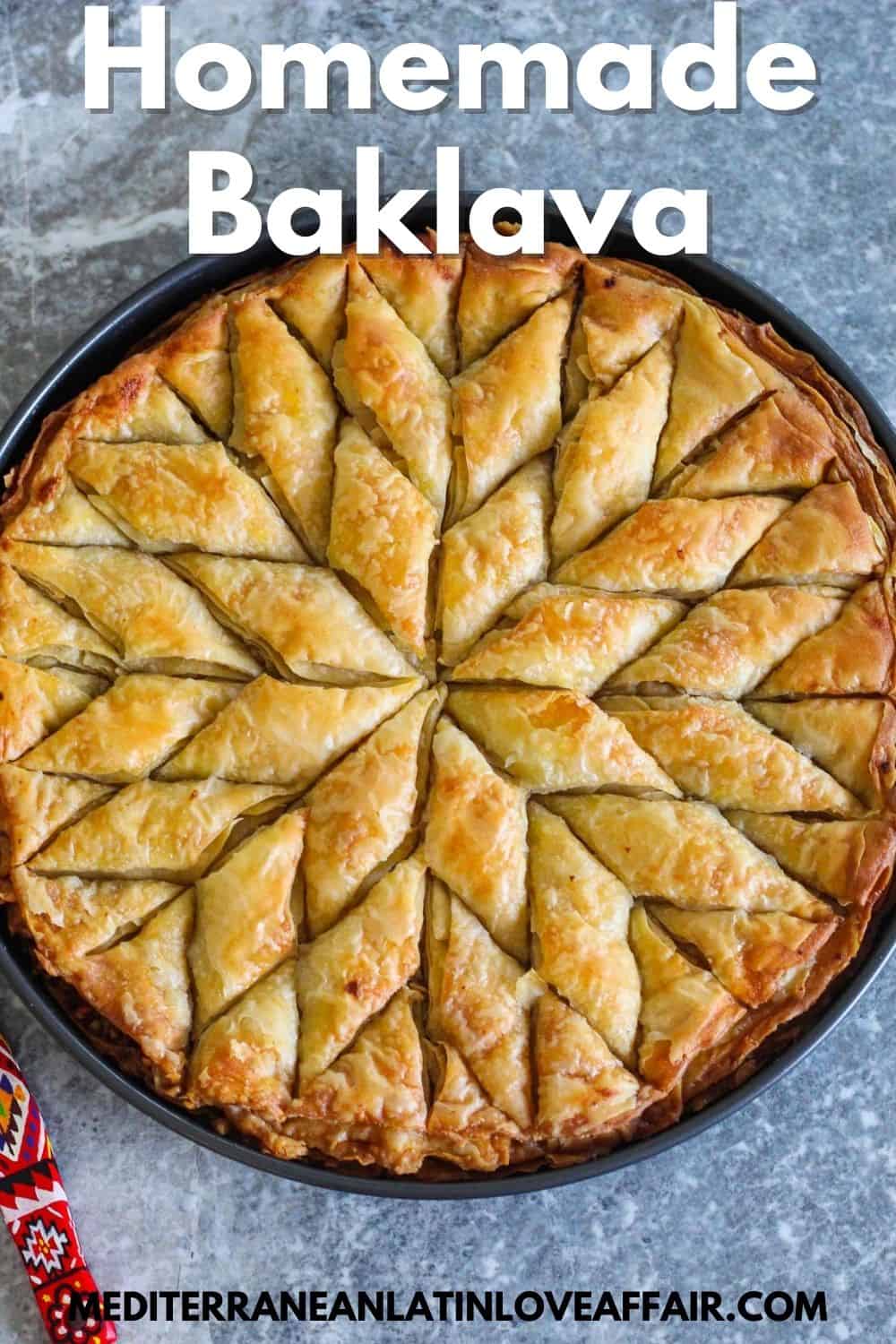





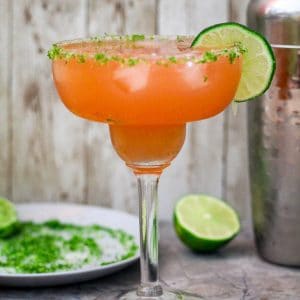

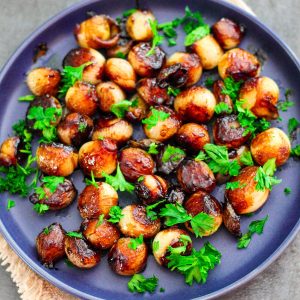
Zach D.
Hi! Tartaric acid powder is typically sold as “cream of tartar” in America, and is found in most spice aisles, in case that helps.
Sonila
Hi Zach, thanks for the information. I actually found out it’s cream of tartar when learning how to make a special type of merengue and it downed on me that it must be the same. I appreciate you taking the time to help out!
Jaia
Hi,
Can you make the dough in advance and then freeze it until ready to use? At what stage should we do this at?
For example, can I make the dough and roll it out and then freeze it stacked in layers with the butter? Or is there a better way to split up the process so I don’t have to make the entire baklava start to finish in a single day?
Thank you!!
admin
Hi Jaia,
I’ll look a bit more into this as it is a very valid question and more readers might face the same dilemma.
I have never frozen the dough, so don’t know if that works.
You can freeze the baklava after you layer it up and add the butter. Cover it with layers of plastic wrap couple of times to avoid freeze burn. My mom says it can be made up to a month ahead but have never tried it. Maybe I’ll do the test with a small tray.
The other option is to bake it after layering & adding butter. Cover it and it stays room temperature for few days, up to a week in refrigerator and longer in freezer (without syrup). When you take it out, don’t rush to add the syrup, let it come to room temperature properly first, otherwise it can be soggy!
Hope this help, I’ll do some more research on this and update the post so more readers can find the information when needed.
Happy holidays and thank you:).
Sonila
Jaia Colognese
Thank you!! Appreciate it!
We just made it, are baking it today. We plan on serving it in 2 days from now – so we were thinking of leaving it at room temperature after it bakes and then adding syrup (hot) the day-of on the room-temp baklava!
Thank you for your reply!
admin
Hope it tastes amazing 🥰! Thanks for letting me know:)
Brunilda
Just come across your blog and you made me remember all the times my family would make bakllava. However, we never used oil but clarified butter. My grandma would say you need to pick up the filo and be able to see thru without breaking the sheet. Amazing generation and definitely a skill that is getting lost.
Wish you and your family a blessed day.
admin
Hi Brunilda, I really appreciate you stopping by & reading my post.
My grandma was the same about how thin the layers should be:))).
I only use oil for the dough but as you said, clarified butter once layering the phyllo as well as soaking it after cut.
Hope my kids would look at my blog one day as not only recipes but part of the culture where their mom came from:)). All the best to you too!
Sonila